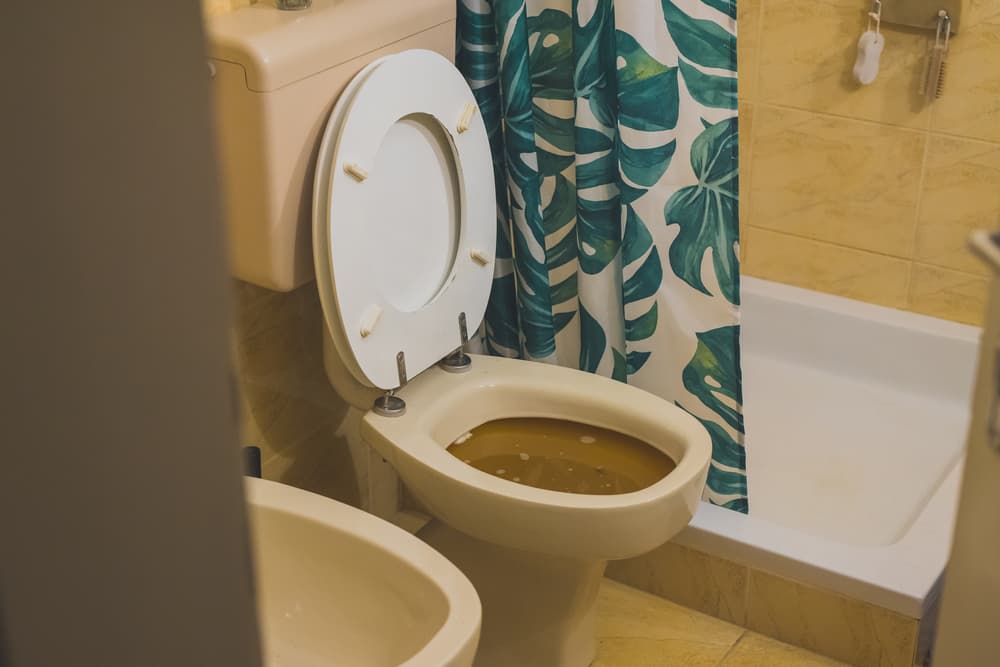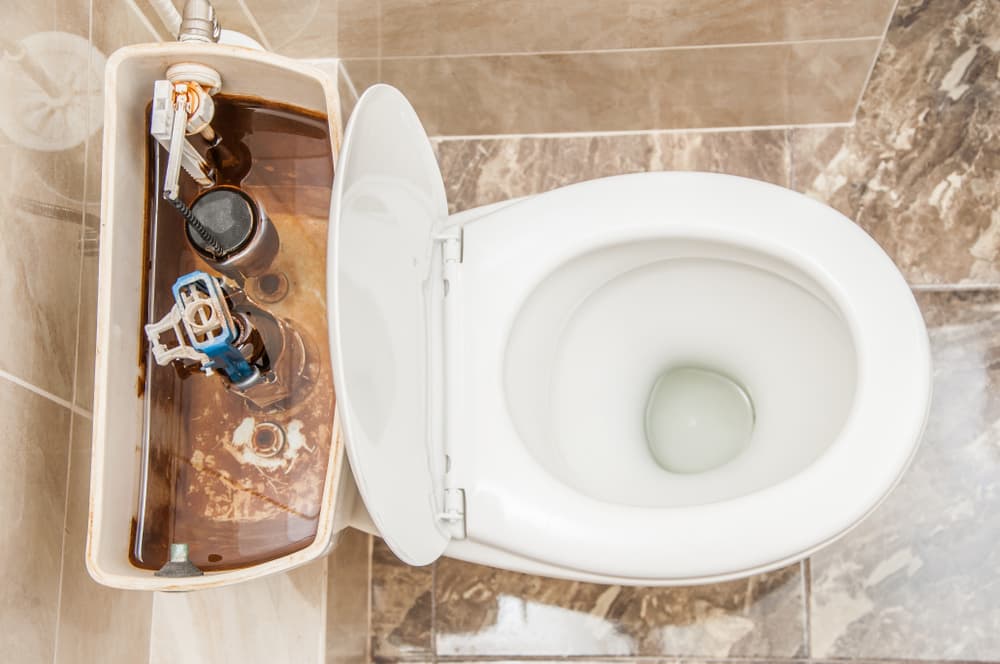When it comes to your bathroom, there is nothing worse than watching the water in your toilet rise up and over the bowl after you try and flush it. An overflowing toilet can cause a big problem very quickly. This is especially true for older toilets, as they have a harder time fighting clogs. To keep the damage an overflowing toilet can cause to a minimum, it’s important to know how to turn off the water as fast as possible.
A functioning toilet is essential in every home, and plumbing emergencies are no laughing matter. An overflowing toilet can quickly cause extensive and expensive damage to your floor and bathroom. That’s why it’s important to know how to shut off the water supply quickly, so you’re fully prepared. Your toilet and all its pipes may look intimidating, but their functions are pretty straightforward. Let’s look at the two main methods for turning off the water supply to your toilet so you can act as an emergency plumber if the situation arises.
For starters, whatever you do, don’t keep flushing. Doing this will not get rid of a clog, it will only push more water up and out onto your bathroom floor. We also recommend that you don’t use any chemicals until the toilet is flushing normally. Although things like Drano work for clogs, it will not work on an overflowing toilet. Plus you don’t want chemicals on your floor either.
We want you to know how to handle this situation when it occurs, so we can come in and fix any issues with your toilet plumbing as soon as possible.

Here are the steps you should take if your toilet overflows:
Method 1: Turning Off the Main Shutoff Valve
To locate the main shutoff valve to your toilet’s water supply, you’ll need to look behind your toilet. Typically, it is a football-shaped valve, but these valves come in all shapes and sizes. The valve is attached to a pipe or hose connected to the bottom of your toilet’s tank, and the other end leads into the wall or possibly the floor.
To turn off the water supply, turn the knob clockwise until it stops. If it is difficult to turn, you can apply a lubricant like WD-40 to help it turn more smoothly. You may need to replace the valve if it still won’t budge. Never use a wrench to force a difficult valve to turn, as this can break it, leading to flooding and all kinds of messy water damage.
Once you have turned off the valve, do a flush test to ensure the water supply has been successfully shut off. After flushing, the toilet tank should empty the bowl without refilling.
Unable to Locate the Main Shutoff Valve?
Some older toilets don’t have shutoff valves. If yours is old, or if you don’t see one, you may need to try a different method.
This method includes shutting off the main water supply to the house — or trying Method #2.

Method 2: Propping up the Float Lever
To stop the water supply by propping up the float lever, you’ll need to start by removing the lid of the toilet’s tank. Inside, you’ll find a hollow container floating near the water’s top. Each time you flush, the float valve falls to the bottom of the tank, opening the fill valve so the tank can fill with water. As the water fills, the float valve moves upward, and once it reaches a certain level, it blocks the fill valve, causing the water flow to stop.
To keep your tank from refilling, you’ll need to place something inside to keep the valve from opening after the toilet is flushed. Find a piece of wood to slip under the toilet float to keep it from falling when the toilet is flushed. This method works perfectly as a bandaid for an overflowing or constantly running toilet while waiting for the plumber to arrive. It does not help if your toilet needs to be replaced. You’ll need to shut off the water at the main shutoff valve to replace a toilet.
When your work is finished, remove the piece of wood and flush the toilet to ensure the tank fills properly again.
Pro-tip: Turn off the Water During a Toilet Overflow
If your toilet is overflowing, you’ve got a plumbing emergency that can quickly destroy your bathroom and raise enormous repair costs. Here are a few things you need to know if you are in this precarious situation.
- Stop flushing!
- Do not add any chemicals to your toilet.
- Locate — and turn — the main shutoff valve until the water supply is off.
- If all else fails, shut off the main water supply to your home.
What to Do If You Have A Toilet Issue That Isn’t Getting Better?
When the water has been shut off, it is now time to figure out what is causing the problem. Our plumbers will come in and check for clogs and sewer backup. These issues are best handled by our professionals because this can be a hazardous job. Call us to schedule an appointment or ask for more details about turning off your water so you can be prepared.
Image Source: Shutterstock/VVVproduct / Anze Furlan



